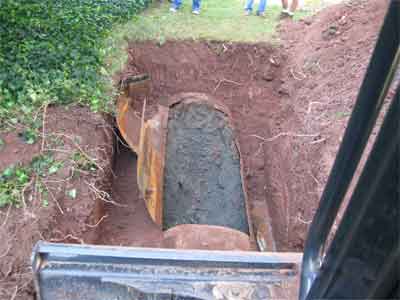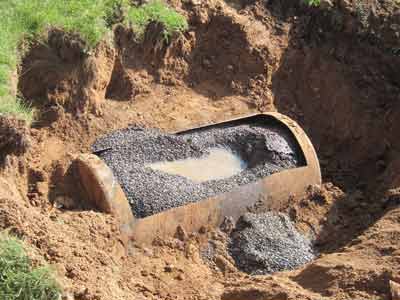Oil Tank Abandonments
Statewide Environmental Services LLC
Oil Tank Abandonment
When abandoning an oil tank, it is important to make sure it is done without contaminating the area, while meeting all government environmental standards. An oil tank that has not been properly abandoned may eventually become an environmental hazard. When oil is not fully removed from an unused tank, soil and groundwater contamination can occur.
It is imperative that an abandoned oil tank be properly addressed so that no pollutants contaminate the area.
Statewide Environmental Services LLC recommends removing the tank when possible. Tank abandonment is only recommended when a structure’s integrity can be in question due to the oil tank removal.
Make Statewide Environmental Services LLC your first call for your oil tank abandonment project.


Oil Tank Abandonment Process
- To begin the abandonment process, first a building permit is obtained, then a “utility markout” is initiated.
- At the work site, a hole (approximately 3′ x 3′) is dug to expose the top of the oil tank. The underground oil tank is cut and all fluids and sludge are removed. Statewide Environmental Services LLC uses only licensed and bonded haulers for oil waste removal. The oil tank and area around the oil tank are checked for signs of leakage. A Statewide Environmental Services LLC technician then enters the oil tank in order to clean and hand wipe the inside.
- If required or requested, two holes will be drilled in the centerline of the underground oil tank and two soil samples will be taken.
- The technician also removes the vent and fill pipes.
- The oil tank is not processed further until the site has been inspected and approved by the appropriate local building inspector and/or fire code official.
- The oil tank is then completely filled in place with a natural, inert material such as sand. Once filled, the lid is placed back on the tank and sealed to prevent water infiltration. The oil tank grave is filled with the existing and supplied fill dirt. Statewide Environmental Services LLC then issues an oil tank “Certificate of Abandonment.”
A Common Question Regarding Oil Tank Abandonments
“The property I am buying has a buried oil tank that was decommissioned. The tank is filled with sand, gravel or foam and contains no oil. The seller has provided permits and reports from the town building inspector stating that the tank was properly abandoned and decommissioned. Is it still necessary to test the soil surrounding the tank to determine whether contamination exists?”
Get An Inspection Of Abandoned Oil Tank Prior To Purchase
If the seller cannot provide any written reports about soil testing, you should evaluate the soil as part of your inspection. In recent months, many homeowners have discovered soil contamination exists around their buried abandoned oil tanks that their town or municipality considered properly decommissioned. These homeowners originally purchased property based strictly on the municipality or town building inspector’s approval and ignored the fact that soil testing was not performed at the time the buried tank was backfilled with sand, gravel or foam. Now these homeowners are selling their homes and are providing the buyer with all the municipality’s documents about the buried oil tank on the property. Since the homeowner provided no documents about the soil condition, the buyer tests the soil and discovers high levels of contamination in the area around the buried tank. Even though the homeowner has all the supporting documentation from the municipality, the responsibility for cleaning up the contamination rests solely with the unsuspecting homeowner.
Note: Cleanup costs can run in the thousands. Don’t let this happen to you! If there is no testing report certifying the soil condition, make sure you test the soil around any abandoned or “properly closed” oil tank before you take possession of the property. Oil tank removal is always recommended. With the tank removed, the tank grave can be accurately assessed for potential contamination.
Contact Statewide Environmental Services LLC
"*" indicates required fields
